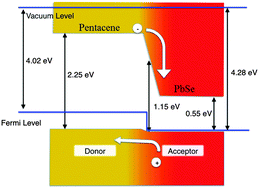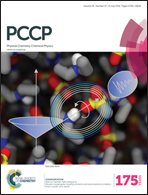Ab initio calculation of pentacene–PbSe hybrid interface for photovoltaic applications
Abstract
We perform density functional theory (DFT) quantum chemical calculations for the pentacene–PbSe hybrid interface at both molecular and crystal levels. At the interface, the parallel orientation of pentacene on the PbSe surface is found to be the most favorable, analogous to a pentacene–gold interface. The molecule-surface distance and the value of charge transfer from one pentacene molecule to the PbSe surface are estimated at around 4.15 Å and 0.12 e− respectively. We found that, standard-LDA/GGA-PBE/hybrid/meta-GGA xc-functionals incorrectly determine the band gaps of both pentacene and PbSe and leads to a failed prediction of the energy alignment in this system. So, we use a relativistic G0W0 functional and accurately model the electronic properties of pentacene and PbSe in both bulk material and near the interface. An energy shift of 0.23 eV, due to the difference in work function at the interface was supplemented after a detailed analysis of the electrostatic potential. The highest occupied molecular orbital level of pentacene is 0.01 eV above PbSe while the lowest unoccupied molecular orbital of pentacene lies 1.70 eV above PbSe, allowing both electrons and holes to transfer along the donor–acceptor junction. Our results provide additional insights into the electronic structure properties of the pentacene–PbSe heterojunction and establish it as a promising and efficient candidate for photovoltaic applications.


 Please wait while we load your content...
Please wait while we load your content...